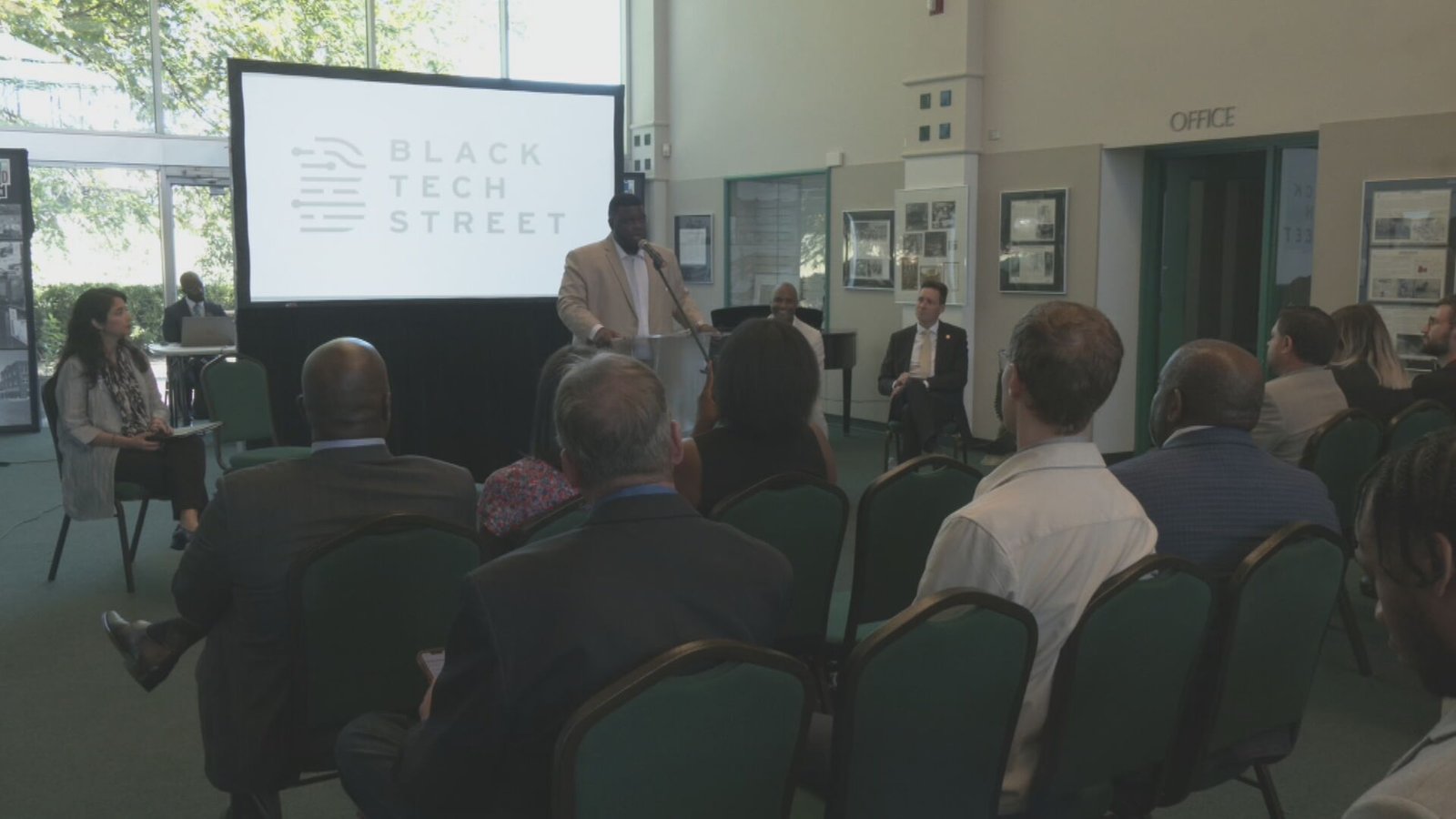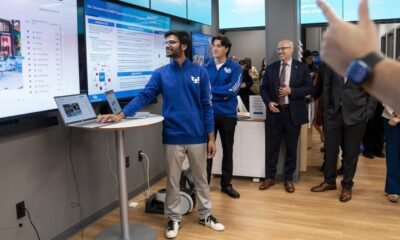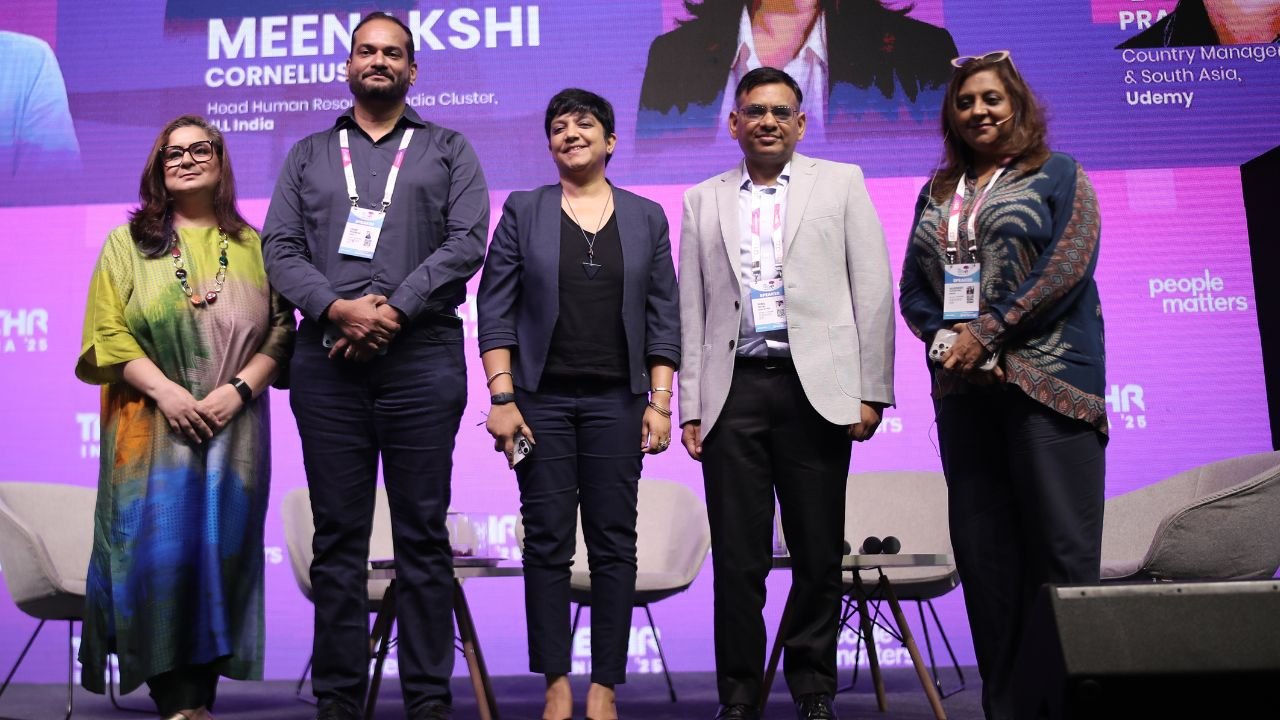Tools & Platforms
Manufacturers praise AI Action Plan

There are a lot of firsts associated with Mesher, who is now chairman of the board at software provider GainSystems. He’s credited with pioneering cloud networks and software-as-a-service (SaaS) models for supply chains. At Descartes, he helped develop the first multicarrier manifest system, the first shipper-carrier electronic data exchange platform, and the first on-demand logistics networks.
But what people seem to remember most about Mesher is a PowerPoint presentation that he gave while at Gartner in the late 1990s. This presentation laid out what he called the “3 V’s of Supply Chain Framework” and identified visibility, velocity, and variability as key principles that supply chains needed to address in order to achieve a competitive advantage.
Two years ago, in an effort to inspire companies to continue focusing on those principles, Mesher, the Council of Supply Chain Management Professionals (CSCMP), and Agile Business Media & Events launched an award competition that takes place at CSCMP’s annual EDGE Conference. This year, the “3 V’s Business Innovation Award Contest” will feature three finalists presenting their companies’ most impactful application of Mesher’s framework in front of a panel of judges. (Information on the competition, including guidelines for submissions, can be found on the CSCMP EDGE website.)
Mesher took some time out to discuss the 3 V’s and the award program with Supply Chain Xchange Executive Editor Susan Lacefield.
Q: Can you tell me the story of how the 3 V’s Framework was developed?
A: So I knew I was leaving Gartner. At that time, Gartner was extremely competitive, and the idea of being a great analyst was about being able to slay dragons or debunk myths or present things differently. The idea was to create something seminal and anthemic. Could you write a piece of research that people would glom onto like an anthem and would also stand the test of time?
You know, when I talk about this with people, I often ask them, “What’s the most seminal and anthemic rock song?” And there’s a fair bit of debate. I’m a “Hey Jude” fan personally, but “Hell’s Bells” gets a few whistles. Every once in a while, “Stairway to Heaven” comes up. But the idea was to be seminal and anthemic.
I was following the guy who invented [the term] “ERP” (enterprise resource planning)—which was pretty hard to beat if you ask me. So with that commentary, I wanted to do something that was as good. It was a bit of my swan song.
Q: What was the central focus of the presentation?
A: My issue was that as everybody went from looking at supply chains for saving money to looking at supply chains for making more money, standardization would become at war with diversification. And this war between standardizing and diversifying—between saving money and making more money—was going to create enormous tension in the business.
The key thing I was researching was, how could supply chain impact corporate competitiveness? That was the fundamental question we were trying to answer. And my view was the 3 V’s. You need to harness visibility, and then to differentiate [yourself], you have to embrace variability. You can’t eliminate it, you can’t run from it, you’ve just got to embrace it. Then competitive advantage would be rooted in velocity, the speed at which you could recombine your network. Because as you know, supply chains are networks, and they change all the time. It’s the speed of this recombination—this velocity—that would be the real differentiation—as long as you embrace variability. So I wrote the paper, and it had a larger-than-life history.
Q: If you had to give the presentation today, would you change anything?
A: Well, I did a 20-year update [to the framework], which now is eight years old. And what I’m hearing is that most people find it very relevant to today. Which is good because the idea is to be a bit ahead of the pack. [In the update,] we talk a lot about the new surveillance economy and how visibility has really graduated to surveillance.
The update talks about how we need to move from the internet of things to the internet and nouns and verbs. So people, places, and things all interconnecting and feeding real-time information engines that understand actions (or verbs) performed by subjects (or nouns) and the state or place to create end-to-end supply chain visibility. Right now, they’re calling that the “agentic internet.”
So that’s the evolution of the notion of visibility as it moves from, you know, tracking my truck to surveilling my suppliers and child-labor compliance and carbon usage. And by the way, we’re watching you all the time. So we’re controlling what you want to buy for sure, and you’re under constant surveillance, right?
The story I use to illustrate this is that I’m a Jewish guy, and I dated a Christian woman for eight years before we got married. While I was in the middle of dating, I started getting christianmingle.com advertisements. How did they know? They were watching. They knew. And it’s an ever-expanding gas, right? It’s just gets broader and broader and broader but more hyperspecialized.
Q: Can you explain what you mean by broader but more hyperspecialized?
A: The whole premise is based on Darwin’s law and hyperspecialization over time. If you study evolution, you know the theory of evolution is hyperspecialization and survival of the most adaptive types. As an example, we started off with computer dating, right? And it was very general, right? And then someone got into a bit of the Russian dating thing, and then we got into the farmers dating thing and the Christians dating thing. We have become more hyperspecialized. OK, now we enter real time. The world is now always on, always connected. And it went to Tinder. And then it got hyperspecialized and went to Grindr. So that’s the notion of generalized to hyperspecialized. So what I did was really try to understand how the evolution and proliferation of the microprocessor and the internet and constant Wi-Fi communication would change everything. And what I say is it’s going to evolve into hyperspecialized subcommunities of common interest over time.
I also just published a piece [on the GainSystems website] called “The Call for Awareness in the Age of AI,” which has gone about as cultlike as my 3 V’s. It has about 40,000 downloads. I basically say, “Can everyone shut up please about this AI stuff and just figure out what really matters and pay attention to the good, old-fashioned stuff?” Because I’ve seen this movie before. I was around in 2000 [during the dot-com era], when everyone lied to everyone the last time. It’s the great big lie déjà vu. The truth is, if you don’t know what you’re trying to transform, no technology, however advanced, can transform it for you. It’s a bit of a call to action to wake the hell up and stop chasing shiny objects and get back to the basics and stop buying everyone’s BS.
Q: Let’s talk a bit about the awards themselves. What are you hoping they will accomplish?
A: Oh, there are two things. One, as it relates to CSCMP and its conference, is that having everyone sit in their rooms with their arms folded listening to a presentation is a bit of a stale last-century model. We needed to make things more fun and more interesting. So I wanted to just help make the event better.
The second thing that was really much more important to me, personally, is that I’m tired of hearing everyone say, “Everybody sucks and fails all the time.” I think it’s important to celebrate success. I think CSCMP needs to do more of that.
Editor’s note: Judging for this year’s 3 V’s competition will be held during the CSCMP EDGE 2025 conference in National Harbor, Maryland. The live competition will feature three finalists presenting before a panel of distinguished judges in the Innovation Theater, sponsored by Knapp, on Monday, Oct. 6. The session will be hosted by Art Mesher himself alongside Rick Blasgen, former president and CEO of CSCMP. To register for the conference, which runs from Oct. 5 to 8, go to www.edgetechconference.com/page/4283440/register.
Primary Tag: 3 V’s framework
Tags: Art Mesher, visibility, variability, velocity, CSCMP, Gains Systems
Section(s): Featured, Plan (primary), Tech
Tools & Platforms
Black Tech Street partners with NVIDIA to bring AI revolution to Tulsa

A new partnership between Black Tech Street and NVIDIA is setting the stage for a major leap in Tulsa’s innovation economy.
The organizations signed a Memorandum of Understanding to develop Greenwood, the site of the original Black Wall Street, into a national leader in artificial intelligence.
“This is going to have an incredible impact on Tulsa,” said Terrance Billingsley II, chief executive officer of Black Tech Street. “NVIDIA is the most valuable company in the world, leading the most important technological revolution in human history.”
The collaboration includes plans to train up to 10,000 learners, support local AI startups, and offer advanced technology resources, all aimed at driving economic growth in the Greenwood District and beyond.
Training 10,000 future innovators
A major part of the plan includes AI training programs designed to reach thousands of students, workers and entrepreneurs across the Tulsa region.
Black Tech Street will lead the creation of the Greenwood AI Center of Excellence, a project funded through Tulsa’s Tech Hub award from the U.S. Economic Development Administration. Of the 51 million dollars awarded to the Tech Hub, 10.6 million will go toward the AI center.
Training will be conducted in partnership with local schools and universities, including Langston University, Tulsa Community College and Oklahoma State University.
Educators will also have access to certification through the NVIDIA Deep Learning Institute University Ambassador Program, which provides cloud-based tools powered by NVIDIA GPUs.
Local economy at the core of the mission
“This is going to be a monumental situation and it is going to affect a lot of people on the ground,” Billingsley said. “The next step is getting NVIDIA integrated into the community, getting certain programs up and running for people to take advantage of, hosting different events, and trying to architect what the big play that is going to transform our local economy is going to be.”
The partnership aims to spark high-paying tech jobs and drive entrepreneurship in Greenwood. According to the agreement, NVIDIA will offer startups access to its Inception program, which helps early-stage companies grow with technology support and networking.
NVIDIA will also provide advanced computing resources, including access to GPUs and cloud platforms for local AI projects.
A collaborative vision with broad support
The agreement is not just local. It sets a foundation for future expansion across Oklahoma.
“Oklahoma is fast becoming a national leader in next-generation innovation, from AI to aerospace and beyond,” said U.S. Sen. James Lankford. “Whether it is in Tulsa or across the state, Oklahoma is proving that you do not have to be on the coasts to be on the cutting edge.”
Louis Stewart, NVIDIA’s head of ecosystem development, echoed that vision. “Our collaboration with Black Tech Street and the larger Tulsa ecosystem is helping prepare and equip all segments of the workforce to operate and sustain transformative technology that is building America’s future.”
Tulsa Mayor Monroe Nichols said he is excited to see the two organizations come together.
“NVIDIA and Black Tech Street are setting the stage for new jobs for Tulsans, and I am eager to see how this investment in innovation will open more doors of opportunity for our community,” Nichols said.
What comes next for Greenwood and beyond
Black Tech Street will continue working with partners, including Tulsa Innovation Labs, Microsoft, Langston University, Tulsa Economic Development Corporation and others to expand the program’s reach.
Tools & Platforms
AI With Integrity: Embedding Ethical Principles Into Tech Strategy – People Matters India
Tools & Platforms
Samsung's AI Home vision: 1 billion devices in three years – 조선일보
-

 Business6 days ago
Business6 days agoThe Guardian view on Trump and the Fed: independence is no substitute for accountability | Editorial
-
Tools & Platforms3 weeks ago
Building Trust in Military AI Starts with Opening the Black Box – War on the Rocks
-

 Ethics & Policy1 month ago
Ethics & Policy1 month agoSDAIA Supports Saudi Arabia’s Leadership in Shaping Global AI Ethics, Policy, and Research – وكالة الأنباء السعودية
-

 Events & Conferences4 months ago
Events & Conferences4 months agoJourney to 1000 models: Scaling Instagram’s recommendation system
-

 Jobs & Careers2 months ago
Jobs & Careers2 months agoMumbai-based Perplexity Alternative Has 60k+ Users Without Funding
-

 Education2 months ago
Education2 months agoVEX Robotics launches AI-powered classroom robotics system
-

 Funding & Business2 months ago
Funding & Business2 months agoKayak and Expedia race to build AI travel agents that turn social posts into itineraries
-

 Podcasts & Talks2 months ago
Podcasts & Talks2 months agoHappy 4th of July! 🎆 Made with Veo 3 in Gemini
-

 Podcasts & Talks2 months ago
Podcasts & Talks2 months agoOpenAI 🤝 @teamganassi
-

 Education2 months ago
Education2 months agoAERDF highlights the latest PreK-12 discoveries and inventions





















